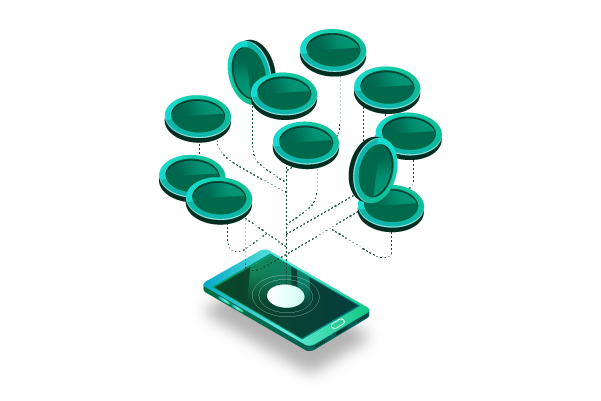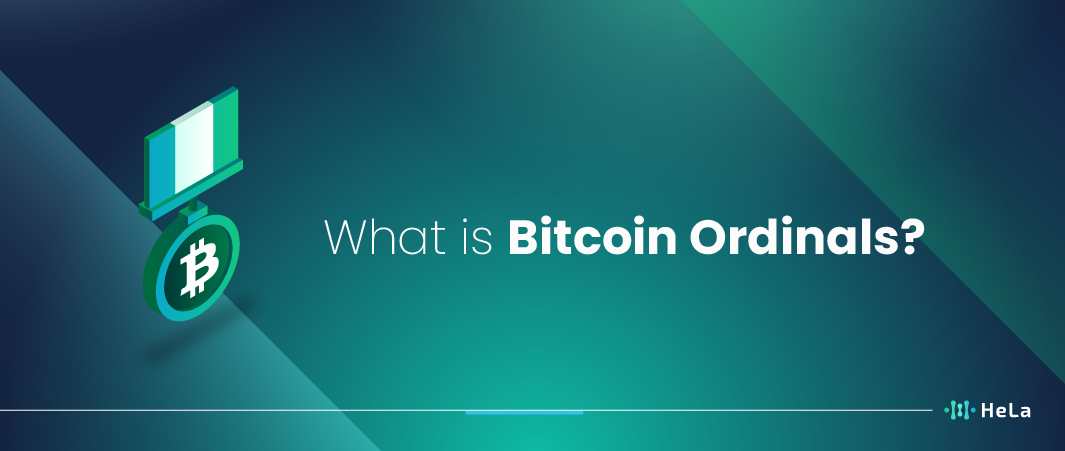In the ever-evolving landscape of cryptocurrency, Bitcoin Ordinals have emerged as a topic of significant interest and debate. As an innovative concept within the Bitcoin blockchain, ordinals introduce a new layer of functionality, enabling the inscription of unique digital artifacts directly onto individual satoshis, the smallest units of Bitcoin. This groundbreaking development not only redefines the utility of Bitcoin but also opens up a realm of possibilities for digital asset ownership and creation.
However, with every innovation comes a set of challenges and concerns. Bitcoin Ordinals, while offering a novel approach to digital assets, also raise questions about the scalability, security, and overall impact on the Bitcoin network. The excitement around ordinals has sparked a surge in interest, but it also brings to the forefront critical discussions about the future direction of Bitcoin and its primary purpose.
This article aims to provide a comprehensive examination of Bitcoin Ordinals. We’ll explore the technical mechanics behind ordinals, their potential applications, and the debates they’ve sparked within the cryptocurrency community. As we navigate through this new frontier, it’s crucial to understand both the opportunities and the risks that Bitcoin Ordinals present.
Unraveling the Technical Intricacies of Bitcoin Ordinals

Bitcoin, as a decentralized digital currency, operates on a complex network of technical intricacies that govern its functionality and security. Understanding the ordinals, or the sequential order of events and processes within the Bitcoin protocol, is crucial for grasping the inner workings of this revolutionary financial system.
At the core of Bitcoin’s ordinals is the blockchain, a decentralized and immutable ledger that records all transactions across the network. Each transaction is assigned a unique identifier and is grouped into blocks. These blocks are then linked together in a chronological order, creating a chain of blocks, hence the term “blockchain.”
Also Read: Components of a Blockchain Network: Exploring the Building Blocks
Mining plays a pivotal role in maintaining the integrity of the Bitcoin blockchain. Miners, equipped with powerful computing hardware, compete to solve complex mathematical puzzles in a process known as proof-of-work. The first miner to successfully solve the puzzle gets the opportunity to add a new block to the blockchain, a task rewarded with newly minted bitcoins and transaction fees. This competitive and decentralized mining process ensures the security and decentralization of the network.
The concept of ordinals extends to the consensus mechanism governing the Bitcoin network. Bitcoin relies on a majority consensus among participants to agree on the validity of transactions and the state of the blockchain. Achieving consensus is a delicate balance, and the ordinals help ensure that the entire network is in sync, preventing issues like double-spending and maintaining a consistent transaction history.
Bitcoin’s ordinals also come into play in the process of transaction verification. When a user initiates a transaction, it goes through a series of steps, including validation by network nodes and miners. The chronological order of these steps is crucial to prevent fraud and maintain the integrity of the entire system.
Furthermore, the Bitcoin protocol undergoes periodic updates, often referred to as “forks.” These forks can be soft forks, where the new rules are backward-compatible with the old ones, or hard forks, which introduce significant changes that are not backward-compatible. The ordinals help track and implement these updates smoothly, ensuring a seamless transition for the entire network.
In unraveling the technical intricacies of Bitcoin ordinals, one must also consider the role of cryptographic principles such as public and private keys. These keys enable secure ownership and transfer of bitcoins, adding an additional layer of complexity to the ordinal structure of Bitcoin transactions.
Applications and Use Cases of Bitcoin Ordinals
Bitcoin ordinals are typically associated with transaction outputs and inputs, providing a unique identifier for each transaction. Here are some potential contexts and use cases that could be considered:
Transaction Verification and Security
- Explore how Bitcoin ordinals contribute to the security and verification of transactions within the blockchain.
- Discuss their role in preventing double-spending and ensuring the integrity of the overall Bitcoin network.
Smart Contracts and Programmability
- Investigate how Bitcoin ordinals might be employed in the development of smart contracts on the Bitcoin blockchain.
- Highlight potential applications for programmable money and decentralized applications (DApps) using Bitcoin ordinals.
Privacy and Anonymity
- Address the role of Bitcoin ordinals in enhancing or challenging user privacy within the blockchain.
- Discuss the potential for implementing privacy-centric features or protocols leveraging ordinals.
Data Analytics and Research
- Explore how researchers and analysts can leverage Bitcoin ordinals for studying transaction patterns, market trends, and user behavior.
- Discuss the implications of such analysis for understanding the broader cryptocurrency ecosystem.
Tokenization and Asset Management
- Examine how Bitcoin ordinals could be involved in the tokenization of assets on the blockchain.
- Discuss the potential for representing real-world assets as unique ordinals within the Bitcoin network.
Interoperability with Other Blockchains
- Consider the possibilities of interoperability between Bitcoin and other blockchains through the use of ordinals.
- Explore how cross-chain transactions and collaborations could be facilitated.
Regulatory Considerations
- Discuss how the use of Bitcoin ordinals might intersect with regulatory frameworks and compliance requirements.
- Explore challenges and opportunities for integrating Bitcoin ordinals into existing financial systems.
Community and Developer Innovation
- Highlight examples of innovative projects and developments within the Bitcoin community that leverage ordinals.
- Discuss how developers are exploring new ways to unlock the full potential of Bitcoin ordinals.
By delving into these areas, you can provide a comprehensive exploration of the applications and use cases of Bitcoin ordinals, offering valuable insights into the evolving landscape of blockchain technology and its potential impact on various industries.
Bitcoin Ordinals’ Ripple Effect on the Network and Market

The Bitcoin Ordinals, a term coined to describe specific milestone points in the cryptocurrency’s history, have long been subjects of intense speculation and analysis within the crypto community. These ordinal points include significant events such as halvings, which occur approximately every four years and result in a reduction of the new supply of Bitcoin issued to miners.
The Ripple Effect of these Bitcoin Ordinals extends beyond mere numerical milestones, as they often trigger a chain reaction of events that impact both the Bitcoin network and the broader cryptocurrency market. One of the most notable ordinal points is the 2020 Bitcoin halving, where the block reward was reduced from 12.5 to 6.25 bitcoins. This event not only affected miners’ incentives and profitability but also led to increased attention from institutional investors seeking exposure to the scarce digital asset.
Analyzing the impact on the network reveals a multifaceted story. The reduced issuance of new bitcoins forces miners to compete more fiercely for block rewards, potentially leading to increased mining difficulty. This, in turn, can affect the overall security and stability of the Bitcoin network. Moreover, the halving events historically coincide with bull markets, as the reduction in the supply of new bitcoins often creates upward pressure on prices.
In the market, the Ripple Effect of Bitcoin Ordinals is evident in the behavior of traders and investors. Halving events are frequently associated with increased volatility and trading activity, as market participants react to the anticipation and aftermath of these milestones. The 2020 halving, for instance, was followed by a surge in institutional interest, with renowned companies and investors publicly expressing their support for Bitcoin as a hedge against inflation and economic uncertainty.
Additionally, ordinal points can serve as catalysts for technological innovations and upgrades within the broader blockchain space. Developers and researchers often use these events as opportunities to introduce improvements to the underlying technology, addressing scalability, security, and efficiency concerns.
As the crypto landscape continues to evolve, understanding the nuanced impact of Bitcoin Ordinals on the network and market becomes crucial for participants seeking to navigate the dynamic and often unpredictable nature of the cryptocurrency ecosystem. It’s not merely about reaching numerical milestones but recognizing the intricate web of factors that contribute to the maturation and resilience of the world’s leading cryptocurrency.
Controversies and Debates of Bitcoin Ordinals
This offers a comprehensive exploration of the multifaceted issues surrounding Bitcoin and its ordinal distribution. In this analysis, we dive into various controversies and debates, examining the intricate landscape of Bitcoin ordinals from multiple perspectives:
Wealth Concentration
The paper addresses concerns regarding the concentration of wealth within a limited number of Bitcoin addresses, exploring the implications for financial inequality and decentralization.
Miner Influence
Discussions delve into the role of miners in shaping the ordinal distribution, considering how mining activities impact the overall structure of the Bitcoin network and its governance.
Regulatory Challenges
The legal status of Bitcoin ordinals comes under scrutiny, with debates on the potential implications for government oversight, taxation, and regulatory frameworks surrounding the cryptocurrency.
Environmental Impact
The analysis extends to the environmental controversies associated with Bitcoin mining, examining the energy-intensive nature of the process and its consequences for sustainability.
Technological Debates
Within the Bitcoin community, ongoing discussions about proposed protocol upgrades and scalability solutions add complexity to the landscape. The tension between maintaining decentralization and addressing scalability issues is explored in detail.
Future Developments and Predictions for Bitcoin Ordinals

It’s important to note that predicting the future of any financial asset, including Bitcoin, is inherently uncertain, and various factors can influence its trajectory. Additionally, developments in the cryptocurrency space can occur rapidly, so staying updated with the latest news and expert analyses is crucial for a more accurate understanding of the current situation.
Institutional Adoption
There was a growing trend of institutional investors showing interest in Bitcoin. This could potentially continue, with more institutional players entering the market. Developments such as the approval of Bitcoin exchange-traded funds (ETFs) in various jurisdictions might contribute to this trend.
Regulatory Environment
The regulatory landscape for cryptocurrencies, including Bitcoin, was evolving. Future developments might include clearer regulations and guidelines from governments and regulatory bodies. This could impact the acceptance and integration of Bitcoin into mainstream financial systems.
Scalability Solutions
Bitcoin faced challenges related to scalability and transaction speed. Future developments might include the implementation of scaling solutions such as the Lightning Network or other upgrades to enhance the network’s capacity and efficiency.
Technological Upgrades
Bitcoin’s underlying technology, the blockchain, could see improvements and upgrades. These might include changes to the consensus algorithm, privacy features, or other technical enhancements to address current limitations.
Market Trends
Predictions for Bitcoin often consider market trends, investor sentiment, and macroeconomic factors. For instance, Bitcoin has been referred to as “digital gold,” and its price dynamics have been influenced by factors such as inflation concerns, economic instability, and global events.
Also Read: How to Build Dapp? Tips and Techniques for Building
Environmental Concerns
There has been increased scrutiny regarding the environmental impact of Bitcoin mining. Future developments might involve a shift toward more sustainable mining practices or the adoption of alternative consensus mechanisms.
Technological Integration
Continued integration of Bitcoin into various applications and services could be a future trend. This might include increased use for cross-border payments, decentralized finance (DeFi) applications, or even developments in the non-fungible token (NFT) space.
Conclusion
In conclusion, the advent of Bitcoin Ordinals marks a momentous leap forward in the landscape of digital assets, ushering in a new era of possibilities within the Bitcoin blockchain. Beyond merely expanding the technical capabilities of the network, their introduction has become a catalyst for unprecedented innovation and heightened interest in the dynamic realm of cryptocurrencies.
Nevertheless, the adoption of Bitcoin Ordinals necessitates a nuanced and balanced approach, acknowledging both their transformative potential and the intricate challenges they present. Ongoing dialogues and debates play a pivotal role in sculpting the trajectory of Bitcoin Ordinals, ensuring their integration into the broader Bitcoin ecosystem is both responsible and sustainable.
Looking ahead, the evolution of Bitcoin Ordinals promises to be a captivating journey, offering a glimpse into the intricate interplay between technology and community dynamics. Whether perceived as an exciting frontier or a potentially concerning trend, one undeniable truth remains – Bitcoin Ordinals have left an indelible imprint on the cryptocurrency landscape, and their nascent journey is merely the opening chapter of a larger narrative that continues to unfold.
Disclaimer: The information provided by HeLa Labs in this article is intended for general informational purposes and does not reflect the company’s opinion. It is not intended as investment advice or recommendations. Readers are strongly advised to conduct their own thorough research and consult with a qualified financial advisor before making any financial decisions.

Joshua Soriano
I am a writer specializing in decentralized systems, digital assets, and Web3 innovation. I develop research-driven explainers, case studies, and thought leadership that connect blockchain infrastructure, smart contract design, and tokenization models to real-world outcomes.
My work focuses on translating complex technical concepts into clear, actionable narratives for builders, businesses, and investors, highlighting transparency, security, and operational efficiency. Each piece blends primary-source research, protocol documentation, and practitioner insights to surface what matters for adoption and risk reduction, helping teams make informed decisions with precise, accessible content.
- Joshua Soriano#molongui-disabled-link
- Joshua Soriano#molongui-disabled-link
- Joshua Soriano#molongui-disabled-link
- Joshua Soriano#molongui-disabled-link

